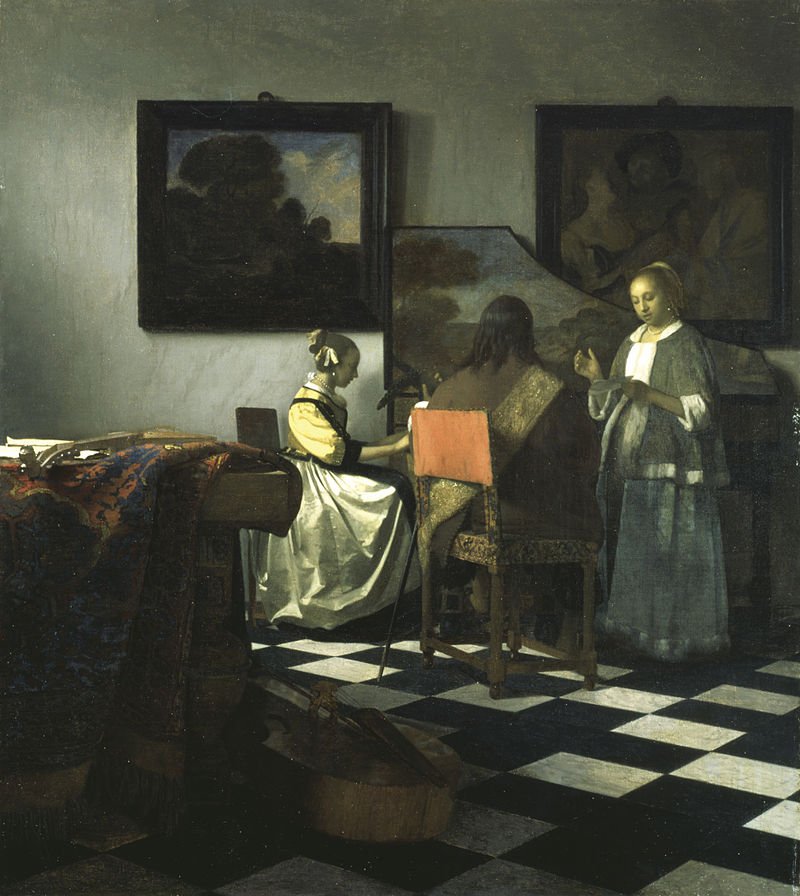The Largest Property Theft in the World: Thirteen Unsolved Mysteries from the Gardner Museum Heist
BY CHARLOTTE SMITH
Eighty-one minutes, thirteen works, and thirty-four years: the Gardner Museum heist is littered with numbers and timelines, but no answers. At 1:24 am on March 18, 1990, following St. Patrick’s Day in Boston, two men disguised as police officers entered the Isabella Stewart Gardner Museum and made off with thirteen of the gallery’s works. Today, that stolen collection is worth $500 million.
Isabella Stewart Gardener Museum Courtyard
The stolen works have never been recovered, despite waves of press attention and a $10 million reward offered by the museum for their safe return. A new Netflix docuseries, titled “This Is a Robbery: The World’s Biggest Art Heist” takes a look into the myriad oddities that make this one of the most captivating American crimes. The following details about the case are striking to both art and crime lovers alike.
One of the most intriguing details of this case is the seemingly random assortment of works that the thieves chose to take. While admittedly pilfering Rembrandt’s Christ in the Storm on the Sea of Galilee and his A Lady and Gentleman in Black, as well as Vermeer’s The Concert, the thieves seem to have strayed from this level of caliber in the remainder of their loot. With these renowned works, they also took an ordinary Chinese vase, an ordinary bronze eagle atop a flagpole, and five minor sketches by Degas. They seemed to have overlooked a drawing by Michelangelo, as well as other paintings and jade figurines worth millions, while wasting some of their 81 minutes freeing the vase from an intricate locking mechanism. They left possibly the most expensive work, Titian’s The Rape of Europa, which was hanging in a third-floor gallery.
Missing: Christ in the Storm on the Sea of Galilee, and A Lady and Gentleman in Black, 1633 by Rembrandt van Rijn, and The Concert, 1664, by Johannes Vermeer
The gallery itself was not necessarily a random target, either. After the death of the founder and namesake, Isabella Stewart Gardner, in 1924, the museum fell into financial disrepair. According to the Guardian, the museum’s lax security was common knowledge among Boston’s criminal elite, making it an easy target for a heist.
The guards that were on duty for the heist raise further questions about the case. The two thieves tricked the young guards on duty, 23-year-old Rick Abath and 25-year-old Randy Hestand, into buzzing them in under the guise of responding to a late-night disturbance. Both guards were handcuffed and gagged with duct tape. Though Abath was never named a suspect, his behavior has come under investigation because he had broken protocol by opening the museum door to the thieves. According to the New York Times, Abath’s assets were monitored by the FBI for decades but there was never any suspicious income.
One of the most haunting details about the case are the empty frames that continue to hang on the gallery walls. The museum stated that they have kept the frames on the walls because of hope that the works will someday be returned to their rightful home. The empty frames also serve as a shocking reminder of the public’s loss of these works.
Despite the fact that the FBI has named suspects in the crime, the works have remained missing. In 2015, the organization revealed the names of its primary suspects: George Reissfelder and Leonard DiMuzio, two associates of the late mobster Carmello Merlino. Both of these suspects resembled police sketches of the thieves, but both died within a year of the heist.
Though there have been a wide range of theories about the robbery, the most important answers seem to be the hardest to come by. According to the Guardian, many theories have come to the surface over the years, spanning from conspiratorial to credible. Most people, including the FBI, argue that the works traveled through organized crime networks throughout Boston, namely through the mob. The narrative of “This Is a Robbery” focuses on Bobby Donati, a mobster who may have organized the theft with fellow criminal Robert Guarente to use the art as a bargaining chip to free their friend Vincent Ferrara from jail. Both Donati and Guarente are now dead.
Another former mobster, Robert Gentile, had long claimed innocence despite a plethora of evidence pointing to his involvement in the crime. He was released from prison in 2019 after serving 54 months on an unrelated charge. Up until his death in 2021, he remained the only person who likely had firsthand knowledge of the 1990 heist.
Investigators continue to hold out hope that the art will be recovered. The museum raised its award to $10 million in 2017 from $5 million in 1997 and $1 million in 1990. Through its dedication of several sections of its website to information about the heist, it embraces publicity in the hope that someone will recognize one of the artworks and return it to its rightful home.
Bibliography:
Bashberg, Tom. "Empty Frames and Other Oddities From the Unsolved Gardner Museum Heist." The New York Times, www.nytimes.com/2024/03/18/arts/design/unsolved-gardner-museum-heist.html?searchResultPosition=12. Accessed 20 Mar. 2024.
Isabella Stewart Gardner Museum. www.gardnermuseum.org/organization/theft. Accessed 20 Mar. 2024.
McGreevy, Nora. "What to Know About the Gardner Museum Heist." Smithsonian Magazine, www.smithsonianmag.com/smart-news/five-things-know-about-isabella-stewart-gardner-art-heist-180977448/. Accessed 20 Mar. 2024.
Rijn, Rembrandt Van. The Storm on the Sea of Galilee. Wikipedia, www.google.com/url?sa=i&url=https%3A%2F%2Fen.wikipedia.org%2Fwiki%2FThe_Storm_on_the_Sea_of_Galilee&psig=AOvVaw2KwXU0VBFCfkSEfd7QtGHI&ust=1710978941265000&source=images&cd=vfe&opi=89978449&ved=0CBIQjRxqFwoTCMC3hbLDgYUDFQAAAAAdAAAAABAE. Accessed 20 Mar. 2024.
Sayej, Nadja. "Will Boston's $500m art heist ever be solved?" The Guardian, www.theguardian.com/artanddesign/2018/jan/19/boston-art-heist-isabella-stewart-gardner-museum. Accessed 20 Mar. 2024.
ST.ART Magazine does not own the rights to any image used in this article




